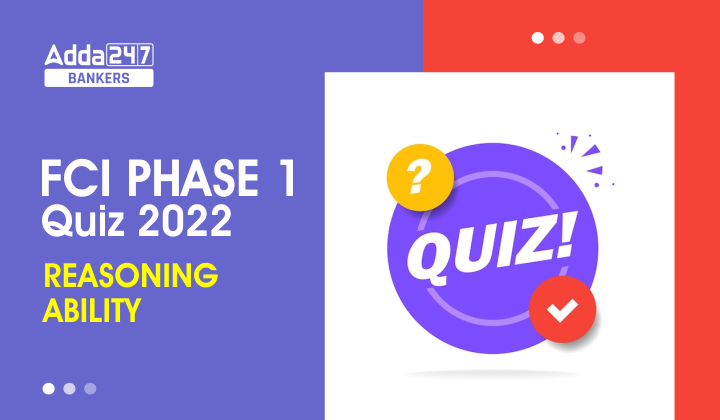Direction (1-5): Study the following information carefully and answer the questions given below-
Eight persons are sitting around a circular table. Some of them are facing inside the center while some are facing outside the center. V sits third to the left of W. S sits second to the left of P. T sits third to the right of S. Both T and Q are facing same direction as V. U sits opposite to Q and Q is not an immediate neighbor of S who is facing opposite direction of P. V is not an immediate neighbour of U. R neither sits opposite to T nor P. Both V and W are facing same direction. W is facing inside the center of the circle. While both R and U are facing same direction to each other but opposite to S.
Q1. Who among the following sits immediate right of S?
(a) R
(b) V
(c) U
(d) P
(e) Q
Q2. How many persons sits between Q and U when counted in clockwise direction with respect to U?
(a) One
(b) Three
(c) Two
(d) Four
(e) No one
Q3. Who among the following faces V?
(a) P
(b) R
(c) S
(d) T
(e) W
Q4. Who among the following sit opposite to R?
(a) W
(b) T
(c) S
(d) P
(e) None of these
Q5. Who among the following sit opposite to the one who sits 2nd right of R?
(a) V
(b) P
(c) Q
(d) S
(e) None of these
Direction (6-10): In these questions, relationship between different elements is show in the statements. The statements are followed by conclusions. Study the conclusions based on the given statements and select the appropriate answer:
(a) If only conclusion I follows.
(b) If only conclusion II follows.
(c) If either conclusion I or II follows
(d) If neither conclusion I nor II follows.
(e) If both conclusions I and II follow.
Q6. Statements: S≤W<O≥R≥G>D≥J
Conclusion I: O>S
II: J<R
Q7. Statements: Q≤L>P=F<E<R=C
Conclusion I: L>F
II: C>P
Q8. Statements: E>T=R<C≤P≥G
Conclusion I: P>T
II: T>G
Q9. Statements: Z<X<T=E>S>L=C
Conclusion I: S>Z
II: T>C
Q10. Statements: S=M≤ Q=I≤W>D
Conclusion I: S=W
II: W>S
Direction (11-15): In these questions, relationships between elements is shown in the statements. These statements are followed by two conclusions. Give answer
(a) If only conclusion I follows.
(b) If only conclusion II follows.
(c) If either conclusion I or conclusion II follows.
(d) If neither conclusion I nor conclusion II follows.
(e) If both conclusions I and II follow.
Q11. Statements: G≤F=L≤J; J≤K=H
Conclusions: I. H=G
II. G<H
Q12. Statements: P<R<S<T>U
Conclusions: I. U<R
II. T>P
Q13. Statements: T>U≥V≥W; X<Y=W>Z
Conclusions: I. Z>U
II. W<T
Q14. Statements: K<L<M<N; M<O<P
Conclusions: I. P>K
II. N>O
Q15. Statements: B<A<C; A>D≤E
Conclusions: I. B≤E
II. C>E
Solutions
Solutions (1-5):
Sol.

S1. Ans. (c)
S2. Ans. (b)
S3. Ans. (d)
S4. Ans. (c)
S5. Ans. (b)
S6. Ans. (e)
Sol. I: O>S(True)
II: J<R (True)
S7. Ans. (e)
Sol. I: L>F (True)
II: C>P (True)
S8. Ans. (a)
Sol. I: P>T(True)
II: T>G (False)
S9. Ans. (b)
Sol. I: S>Z (False)
II: T>C(True)
S10. Ans. (c)
Sol. I: S=W(False)
II: W>S (False)
S11. Ans. (c)
Sol. I. I.H=G (False)
II. G<H(False)
S12. Ans. (b)
Sol. I. U<R (False)
II.T>P(True)
S13. Ans. (b)
Sol. I. Z>U (False)
II.W<T(True)
S14. Ans. (a)
Sol. I. P>K (True)
II. N>O(False)
S15. Ans. (d)
Sol. I. B≤E (False)
II.C>E(False)





 GA Capsule for SBI Clerk Mains 2025, Dow...
GA Capsule for SBI Clerk Mains 2025, Dow...
 The Hindu Review October 2022: Download ...
The Hindu Review October 2022: Download ...
 Delhi CSIR CRRI Recruitment 2025 Notific...
Delhi CSIR CRRI Recruitment 2025 Notific...







